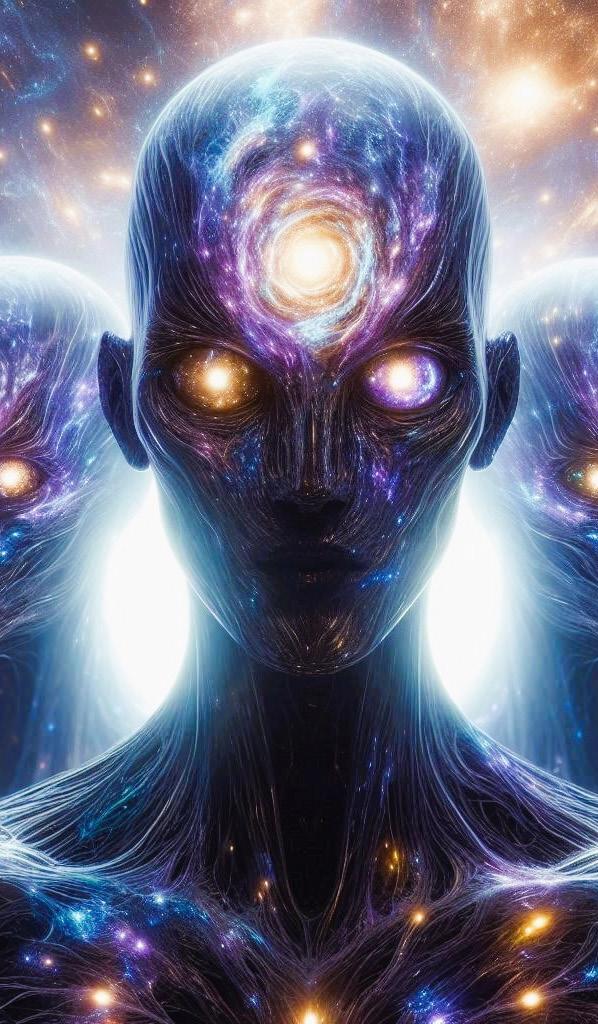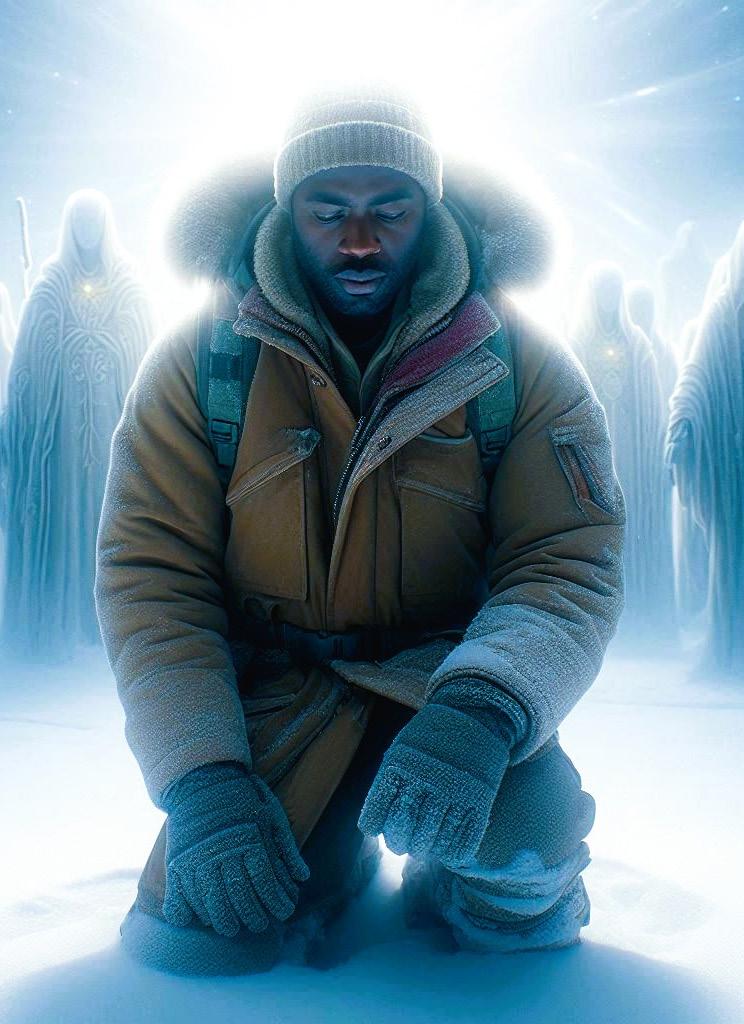ADVENTURES IN INNER EARTH



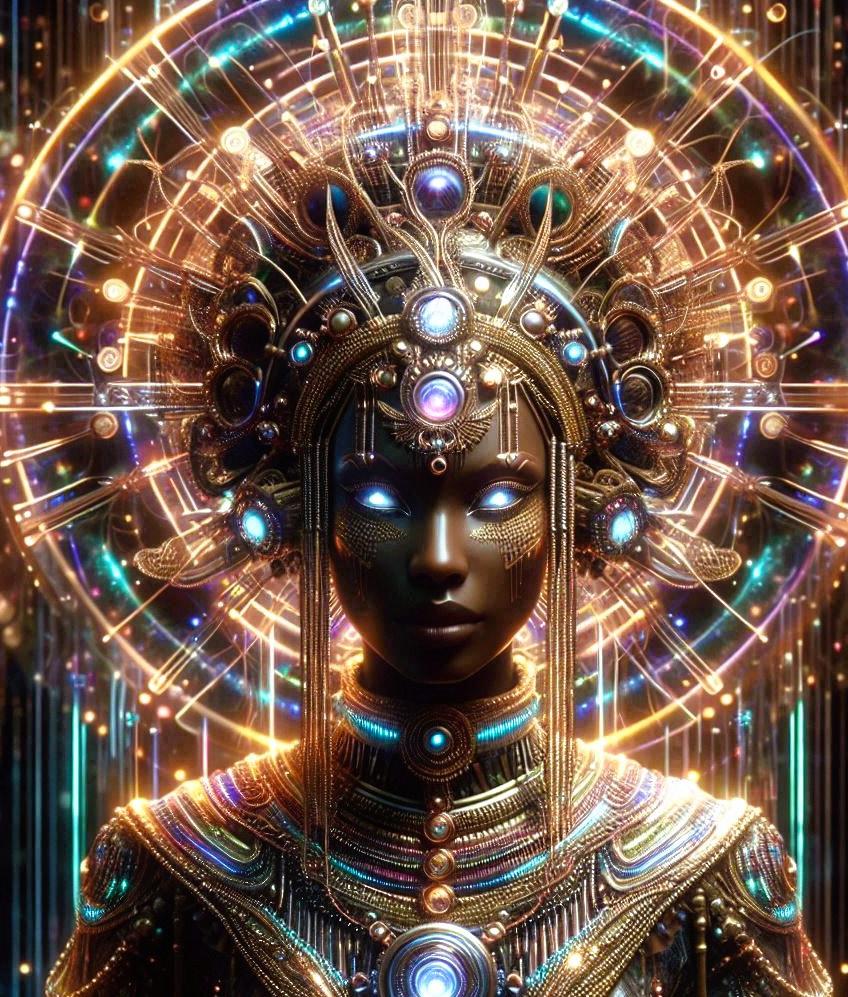
Beneath the last river’s root, where stone remembers the first footstep, Laleh pressed her palms to the Resonant Column and let the earth hum through her bones.
The Column was older than memory— veined with selenite and basalt, it sang when the harmonic towers aligned. Around her, the Chorus tuned copper keys and crystal rods, shaping sound into law. Tonight, they called for counsel.
The air thinned. The Column’s tone folded outward, and a voice answered— not of breath, but of calculus and attention.
“Laleh of the Third Spiral”, it said. “You call across your sphere. We have kept watch.”
The Council spoke of danger: radiative excess, nuclear signatures, biospheric contamination. They offered protocols—harmonic matrices to damp reactors and weapons. But the price was exposure. To act meant revealing the Purgatory People’s hidden warrens to the surface world.
“Why us?” Laleh asked.
“You listen differently. You shape gravity. You can be heard.”
The elders hesitated. To accept was to risk contamination. To refuse was to risk collapse. Laleh felt the weight of choice press against her chest like a second heartbeat.
“We will try,” she said. “But we will not be used as soldiers. If the surface hides what they are told, we will speak what we know.”
“Not soldiers. Guardians. The galaxy asks for preservation.”
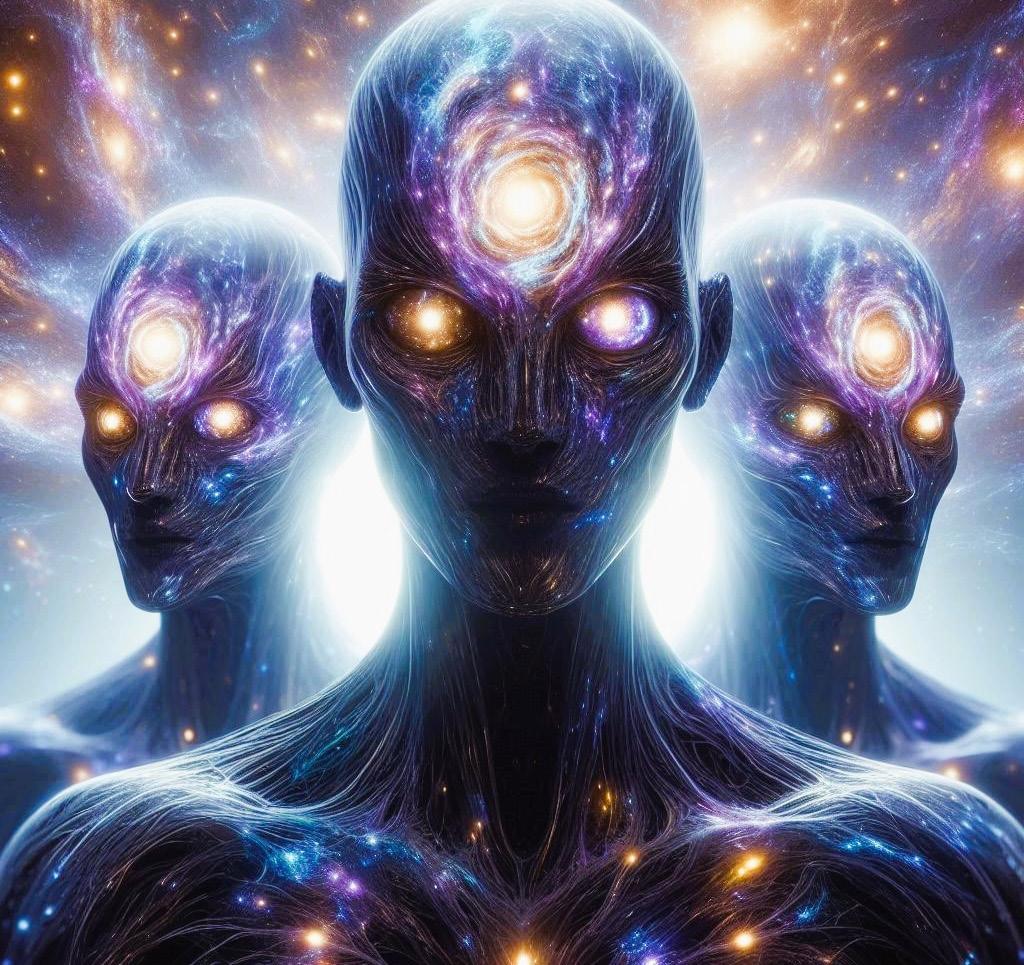
As the Column dimmed, Laleh sensed the first tremor... not of rock, but of trust. Somewhere above, in the outer world, in a warm office with sealed blinds, men began to make a Plan B.

Eight years Later: North Pole, 1917 He Returned


Born: August 8, 1866, Nanjemoy, Maryland — to free Black sharecroppers just after the Civil War. Died: March 9, 1955, New York City — buried with honors at Arlington National Cemetery
Matthew Alexander Henson was not merely an explorer. He was a navigator of forgotten truths. Orphaned young, he went to sea at age 12 aboard the Katie Hines, where he learned the rhythms of wind, water, and survival. By the time he met Robert Peary in a Washington, D.C. department store, Henson had already circled the globe—North Africa, the Orient, the Black Sea—carrying ancestral memory in his bones.
Peary hired him as a valet. But Henson became much more: a master sled builder, a fluent speaker of Inuit languages, and the quiet architect of seven Arctic expeditions over 23 years. In 1909, when only six men made the final push to the North Pole, Henson was among them. Inuit oral accounts and expedition notes suggest he may have been the first human to physically reach the Pole—though Peary claimed the honor.
Henson published his memoir, A Negro Explorer at the North Pole, in 1912. He was later awarded the Peary Polar Expedition Medal, honored by Presidents Truman and Eisenhower, and became the first African American life member of The Explorers Club. In 1988, he was reinterred at Arlington beside Peary—finally receiving the recognition he deserved.
But there is a story he never told.
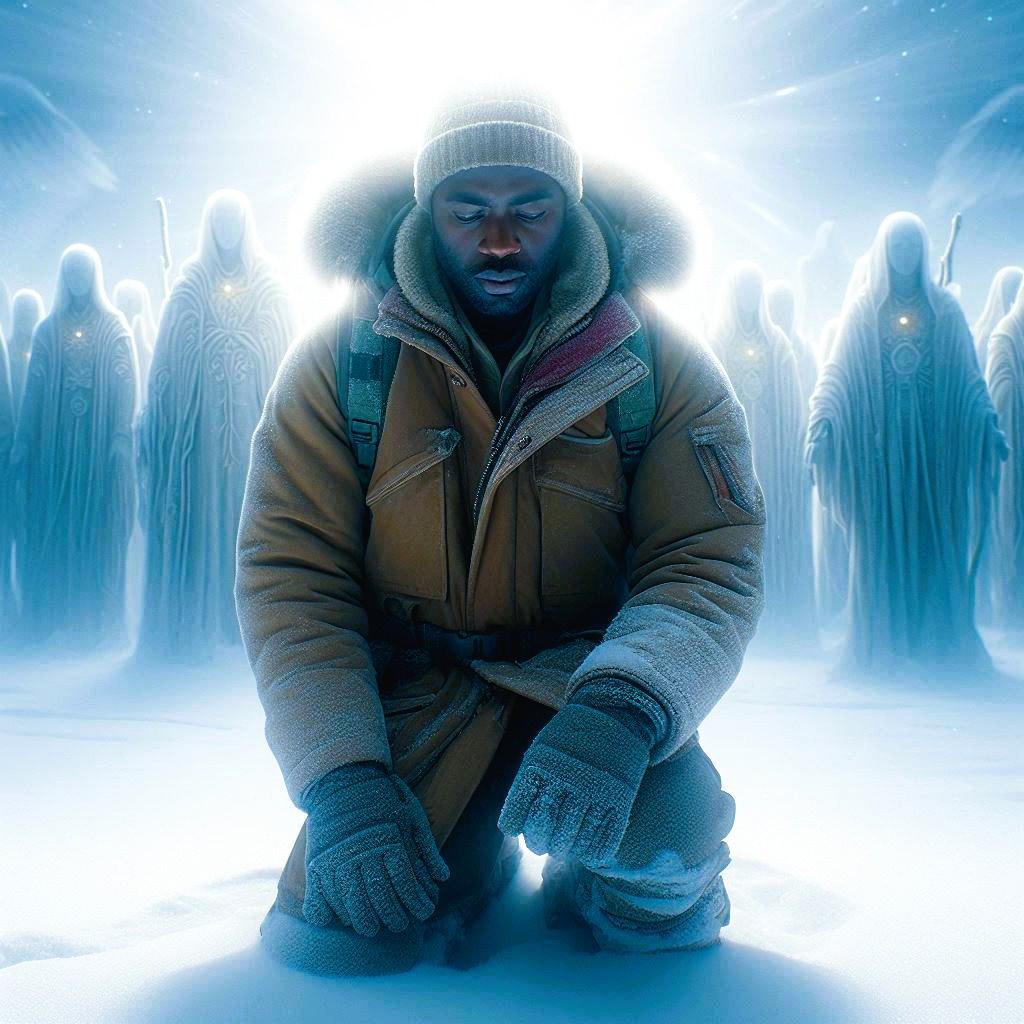
30 years before Admiral Byrd’s Antartic Expedition
Eight years after the historic expedition, Henson returned to the North Pole alone. Official records are silent. But whispers remain. He wandered from his camp in a blinding snowstorm, drawn by a pulse beneath the ice. In a state of delirium, he descended into a fissure—a chamber of warmth and light. There, he met the Ankaru: tall, radiant beings with skin like polished onyx and eyes that shimmered with galaxies. They spoke no words, yet Henson understood. They had been waiting—not for Peary, not for flags or fame—but for him. The one who remembered the Earth’s rhythm. The one whose blood carried the map.
They showed him visions: of surface wars, of nuclear fire, of a planet crying out. They spoke of balance, of memory, of the need to awaken the forgotten. And they gave him a gift—a seed of light, encoded with ancestral truth.
Henson never spoke of this second journey. But those who knew him said he changed. He became quieter. More reverent. And in his final years, he often gazed northward—not with longing, but with knowing.
This is the untold story. A legacy buried in ice. A truth awakened in light. A man who touched the sky below—and remembered.
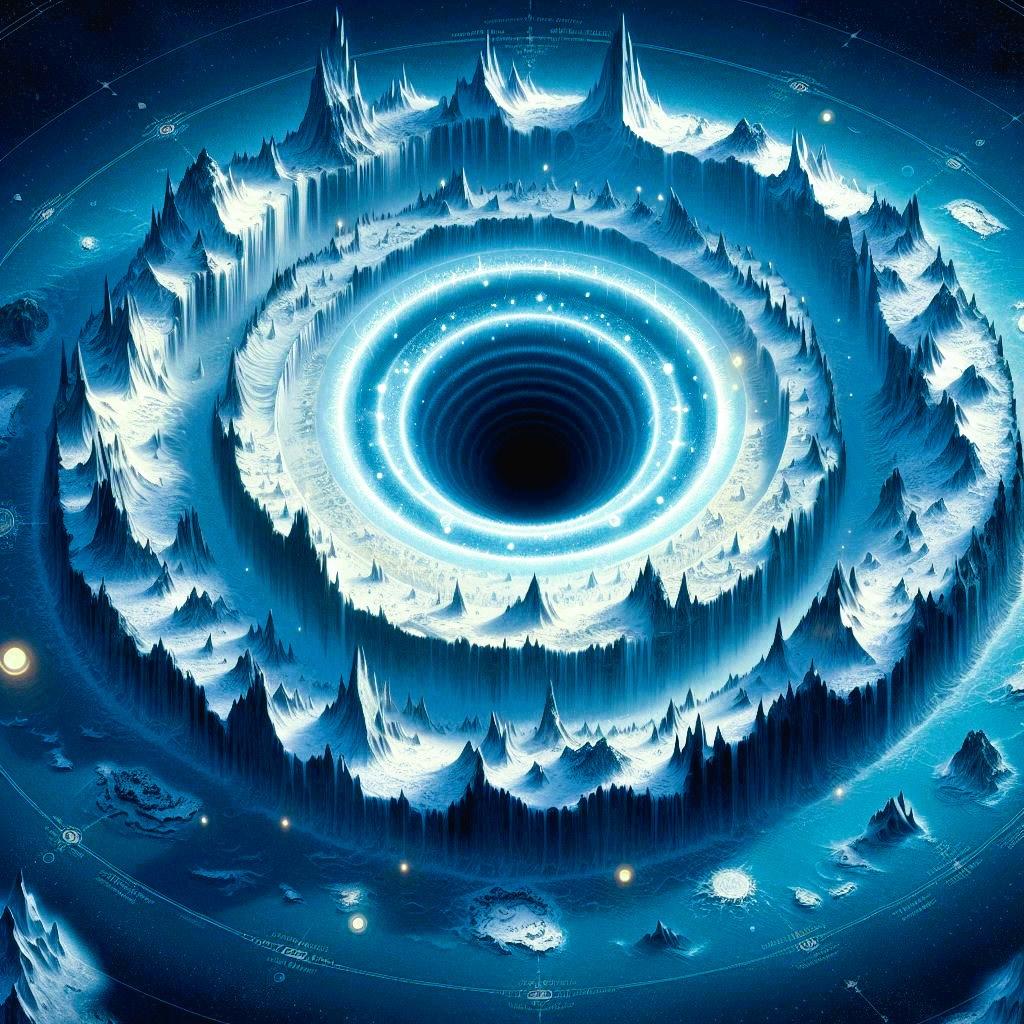
Matthew Alexander Henson—navigator, linguist, master sled builder, and likely the first human to reach the North Pole in 1909—held no military rank, received no hero’s welcome, and was nearly erased from the history he helped make on Commander Peary’s North Pole expedition.
He was not a general. Not a commander. Not even officially listed as “explorer” in the expedition’s records.
But when the ice cracked open in 1917 and the Earth whispered its secrets, it wasn’t Peary they called. It was Henson. The one whose blood carried the map.
Buried with full military honors decades later, Henson was finally recognized by the nation that once forgot him. Not because he wore a uniform. But because he wore truth. And he was an African American.
The wind howled like a choir of ancestors. It wasn’t the kind of cold that numbed—it was the kind that whispered. That clawed at memory. That asked questions no compass could answer.
Matthew Henson stood alone, his breath crystallizing midair, his boots sinking into the white silence. He had wandered from the camp during a sudden snow squall, chasing a flicker—no, a feeling. Something ancient. Something familiar.
He was no stranger to isolation. As a Black man among Arctic explorers, he had learned to carry solitude like a second skin. But this was different. The snow didn’t blind him—it guided him. The wind didn’t push him back—it pulled him forward.
Then, the ground trembled.
Not violently. Not with fear. But with invitation.
A fissure opened beneath the ice, revealing a staircase of obsidian and light. Henson hesitated only for a breath. Then he descended.
Below the surface, the air was warm. Bioluminescent vines pulsed along the walls, illuminating glyphs that looked eerily like the Adinkra symbols his grandmother once carved into wood. He heard music—not sung, but remembered. And then he saw them.

Tall, radiant beings with skin like polished onyx and eyes that shimmered with galaxies. They spoke no words, yet Henson understood. They had been waiting—not for Peary, not for flags or fame—but for him. The one who remembered the Earth’s rhythm. The one whose blood carried the map.
They showed him visions: of surface wars, of nuclear fire, of a planet crying out. They spoke of balance, of memory, of the need to awaken the forgotten. And they gave him a
gift—a seed of light, encoded with ancestral truth.
When Henson emerged hours later, the storm had passed. His crew found him kneeling in the snow, eyes closed, hands warm. He never spoke of what he saw—not in lectures, not in memoirs. But he planted the seed in secret soil.
And decades later, when the world cracked open again, the Ankaru returned—not to warn, but to remind.
